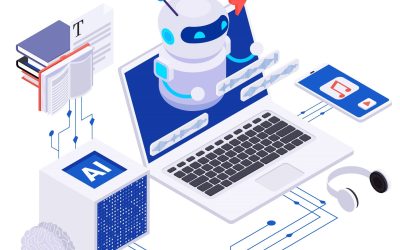In my last article, I provided tips for successful large scale change. Most of those suggestions were to help prepare people for change, some beginning in the months or years leading up to the implementation. When large changes occur, preparation beforehand is only half the battle. The perception of success or failure depends on how well people faced with integrating these changes into their daily life are supported after the change has occurred.
This time, we’ll focus how you can integrate change into people’s routines in the weeks and months immediately following any shake-up. There are several areas you can focus on to ensure that the change is permanent and positive for all concerned.
Short-Term
On-Call Support
Whether what’s changing is your technology, your process, your organization, or your strategies, people will have questions, issues, and problems on the day of the change. If something is standing in the way of people getting their jobs done and there’s no one to help, the result is frustration, loss of productivity, confusion, and resentment. Customer satisfaction, employee safety, management credibility, and the bottom line all can suffer as a result.
Set up a variety of ways in which people can get expert help. Consider a hotline, a conference room filled with SMEs, a special mailbox, a webpage with FAQs, and roving floor support to resolve questions and issues right away. It’s important that people get their answers quickly and effectively. Make sure that your support staff has the technical expertise, and is empowered, to solve problems on the spot.
On-Demand Training and Job Aids
Training and information should have been available before the date the change was rolled out. Here’s news that won’t surprise you: not everyone was able to attend, and not everyone who attended was attentive. All of us have too much to remember, and will need help on some aspect of the change. Create a place that people can go online for brief, basic training of what they need to know when they need to know it. Publicize the location of this resource widely and repeatedly. Provide step by step instructions and checklists. Tailor them to specific roles or job functions, if they differ from one another. Provide daily tips and continually update the FAQs.
Medium Term
Feedback, Monitoring, and Measuring
During the weeks and months after the change, talk to everyone who has been affected. Have meetings, send out surveys, and stop them in the coffee room. Log every question, issue, and problem reported. Get employees’ input, negative and positive, about how the change helped or hindered their ability to do their job. What do they think went right and wrong? What’s better about their jobs now, and what do they wish they had back? Remember that change is only as successful as your people make it, so do everything in your power to adjust, enhance, or correct what you can immediately. For issues that will take longer, involve those that provided the input to help create the solution.
While you were initially planning for the change, you did a thorough impact assessment on adjacent processes that would be affected, didn’t you? Of course you did. But process integration needs continuous monitoring over the short, medium, and long term to reinforce the change and ensure that people don’t revert to their old ways of getting things done.
Take a 360-degree view of the upstream, downstream, and supporting/supported workflows that are directly or indirectly affected. Investigate and analyze any reports of troubles that popped up around the same time as your change, even though a connection may seem unlikely. We inevitably miss things in our planning, and need to actively look for problems we might have created.
There will be some informal processes that were overlooked during the initial impact assessments. Keep an eye out for these workflows. Legitimize them and fold them into the mainstream them by including them in the ongoing process integration.
Long Term
Measuring Success
Prior to any change, the organization should have agreed on what metrics would be used to determine the success of the change. Now you will start a regular cycle of measuring those results. Use objective measures such as cycle time, costs, speed to market, your safety record, or measure more subjective dimensions such as customer satisfaction or employee engagement.
Ongoing Support
When companies implement technology changes, it’s common to have the developers, implementation team, or vendor train the help desk or call center that will support the technology over the long term. What about process and organizational changes, though? In many cases, we don’t take as much time to consider who will take point on questions that come up around a new training curriculum, reorganization at the management level, or a change in our sourcing process.
Does your company have a Process Catalog that names an owner for each process, or is there a Business or Process Architecture group that might be the first point of contact for these issues on an ongoing basis? Let people know who to go to when problems and questions arise via e-mail, an Intranet site or bulletin board, or in the company newsletter.
Training
Update new employee training to ensure people know the current practices and processes. While you’re at it, review any departmental training and job aids that might have included references to the old way of doing things, and work with department manages to update that as well.
With the pace of change in today’s world, it’s likely that your period of stability will be brief, so make change management a routine, predictable process. Each time you demonstrate excellence in the planning, execution, and support for major changes, the organization will move further along the path to being ready, able, and willing to accept change.

















